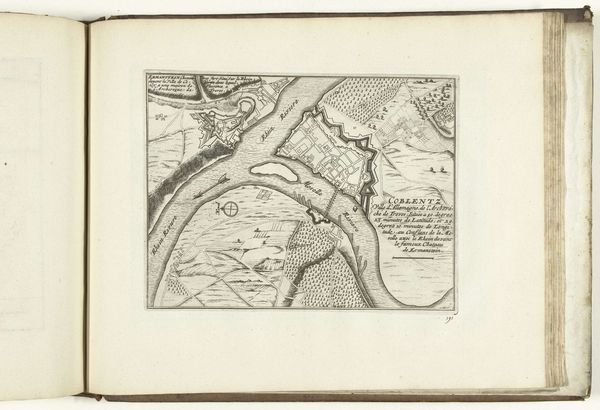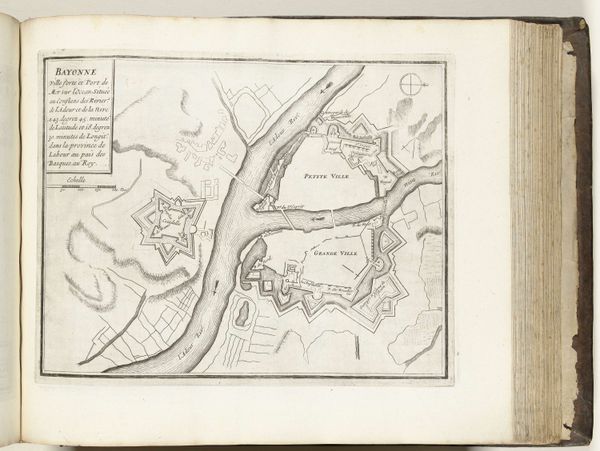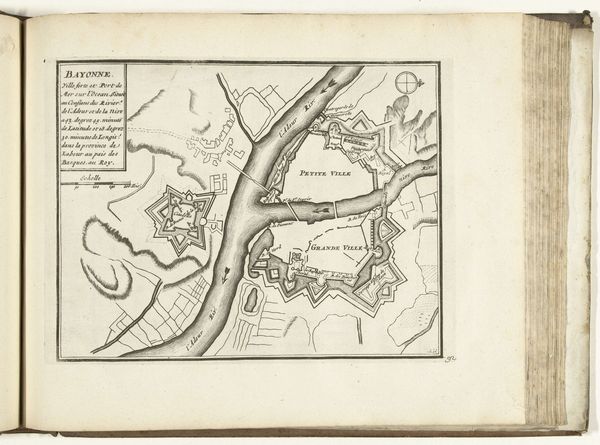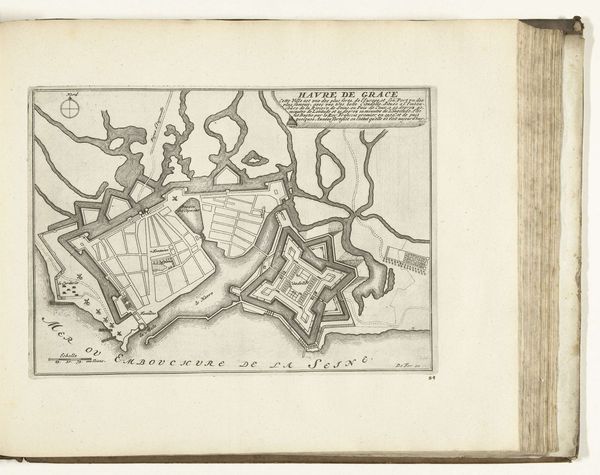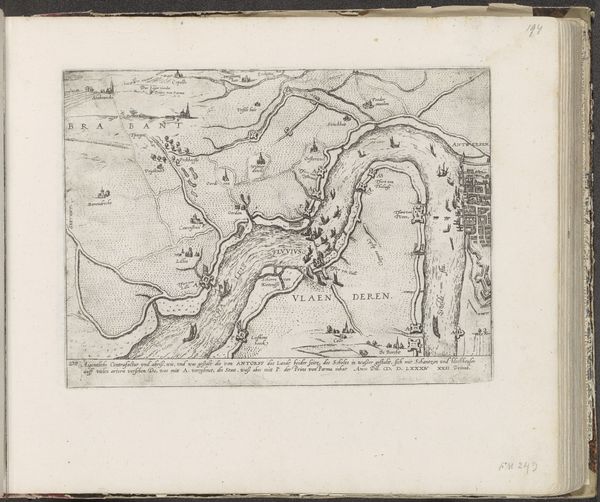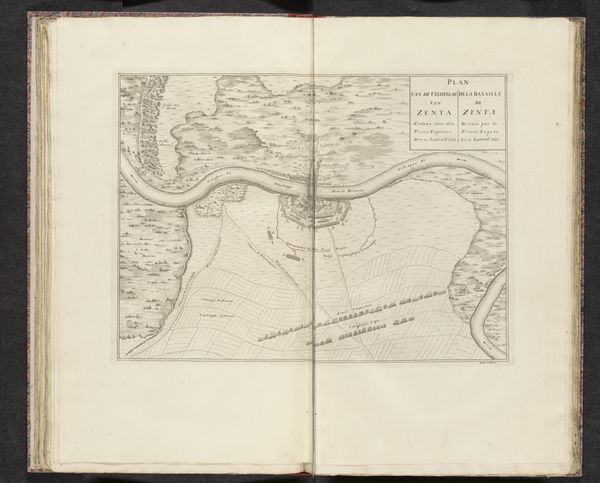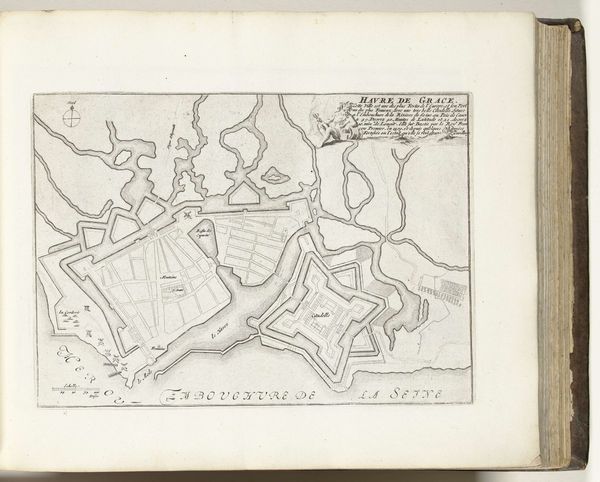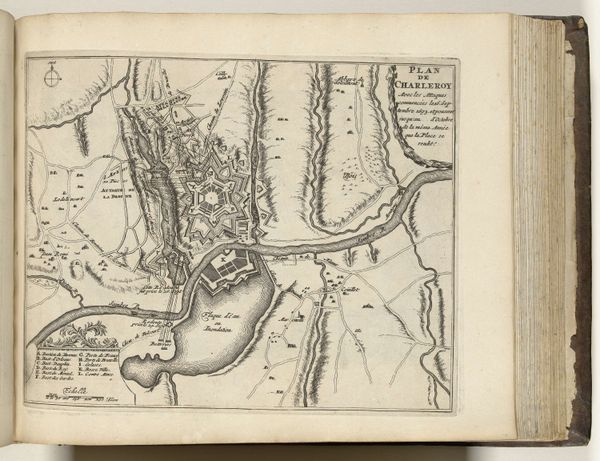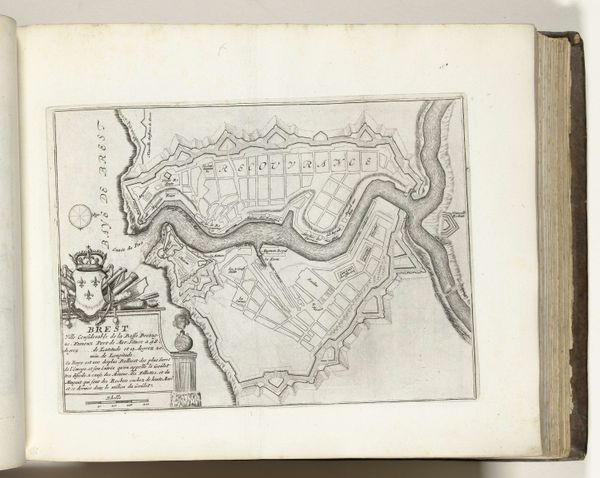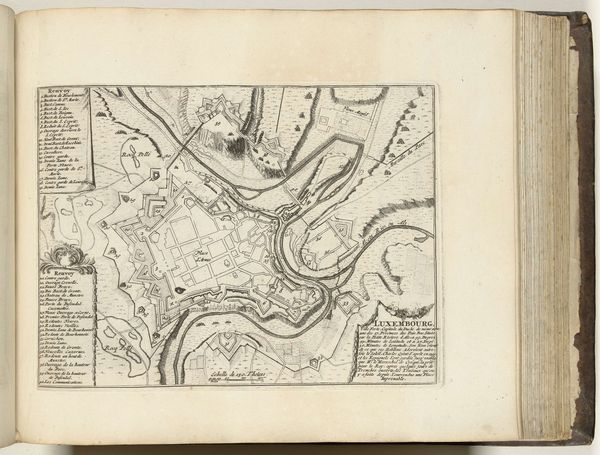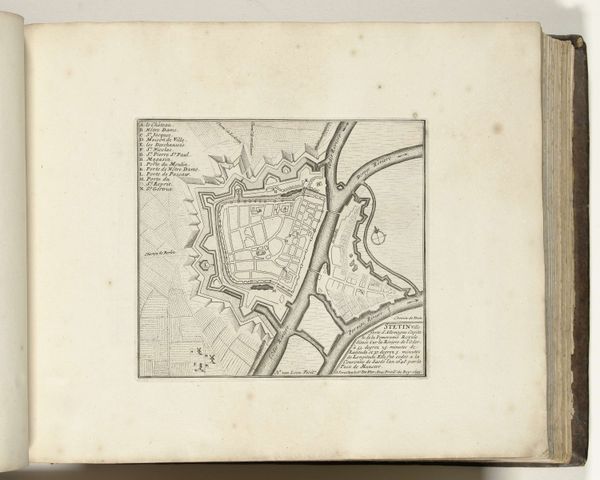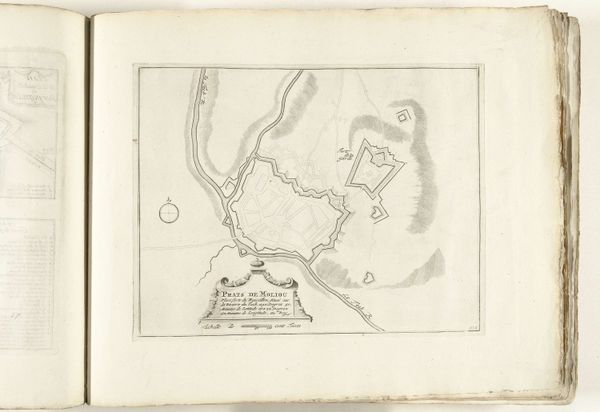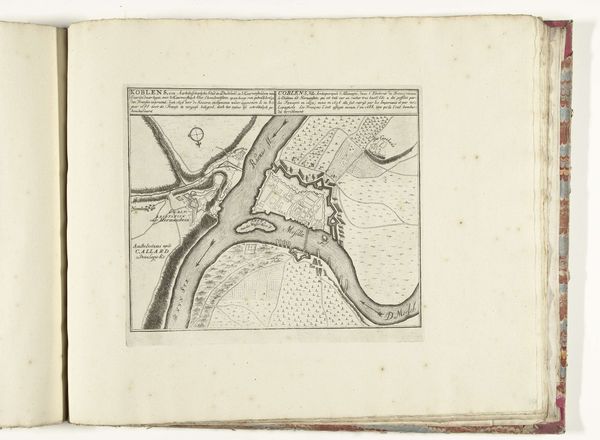
drawing, print, paper, ink, engraving
#
drawing
# print
#
paper
#
ink
#
geometric
#
cityscape
#
history-painting
#
academic-art
#
engraving
Dimensions: height 192 mm, width 250 mm
Copyright: Rijks Museum: Open Domain
Curator: This print, titled "Plattegrond van Koblenz, 1693", comes to us anonymously from that year and portrays a map of Koblenz made with drawing and engraving. What is your initial read of this piece? Editor: My eye is drawn immediately to the network of lines—the density in the urban areas versus the open space. You can practically feel the labor involved in meticulously etching each detail into the plate. It also speaks to me of borders, boundaries and claims. Curator: Indeed. Notice how the strategic layout adheres to established visual conventions of the era? The rigorous geometry—perfect squares, symmetrical arrangements, and balanced compositions—echo the rationalist philosophies gaining prominence. Observe, also, how negative space gives emphasis to fortifications. Editor: Right, but thinking about materiality: the ink, the paper—those were commodities. The act of mapping itself was bound up with resource control and administration. Who commissioned this map, and for what purpose? Its inherent connection to power structures needs emphasis. The act of marking and claiming. Curator: Precisely. Consider the tension between representation and abstraction. It isn’t merely a utilitarian depiction. Instead, it’s elevated by an appreciation for formal values: clean lines, harmonious organization, and graphic hierarchy to signify control and influence. Editor: It is hard to ignore that it looks more like a carefully calculated statement of power than an act of geography; each careful strike of ink another step taken to exploit or stake claim on Koblenz for personal and/or professional advancement. A commercial opportunity through ink. Curator: That tension between objective representation and subjective interpretation lies at the heart of the piece. The image also suggests the complex relationships between artistry, design, and function. Editor: Looking at the materials shifts it. When you center process, production, the people impacted by it, that formality feels different. Less an academic exercise, more an actively deployed piece of a larger structure. It brings history into a whole other sphere, with ink and engraving at its forefront. Curator: Thank you for bringing forth a new appreciation to how to interpret its deeper narrative and the value we put on visual composition as an integral piece of historical, material, and, ultimately, human perspective.
Comments
No comments
Be the first to comment and join the conversation on the ultimate creative platform.
